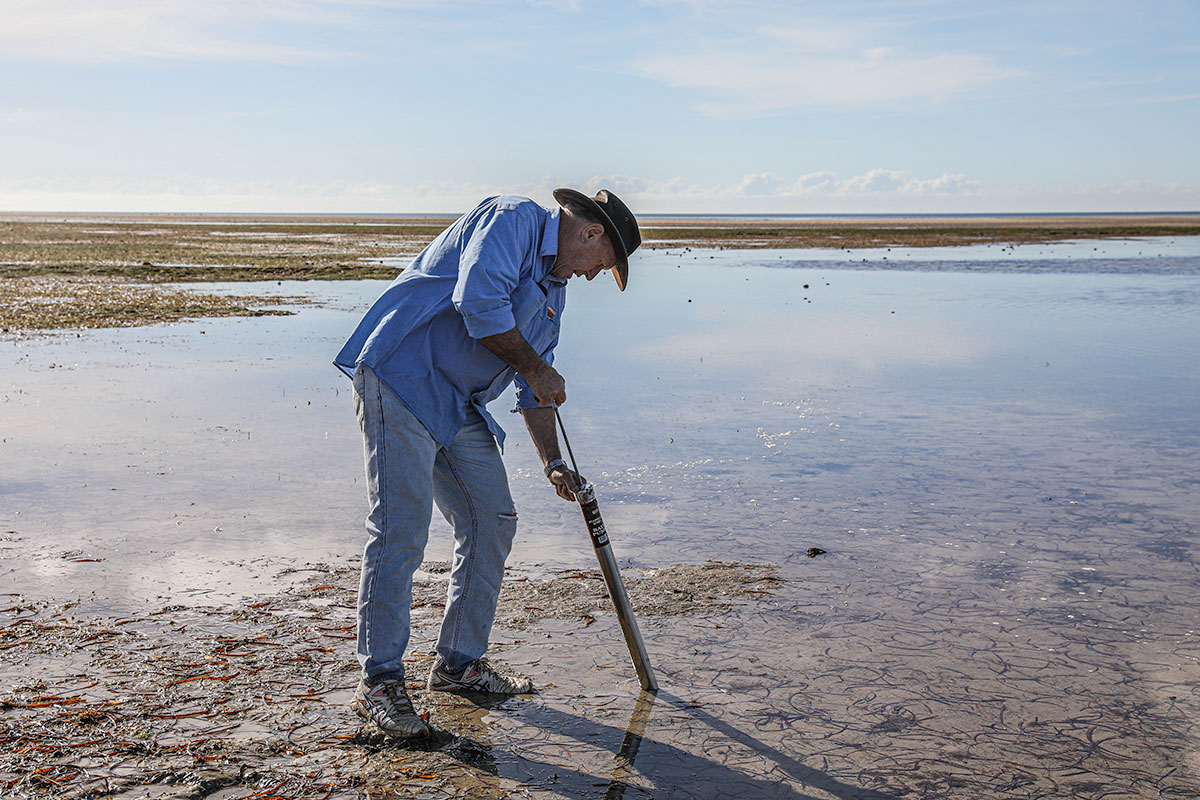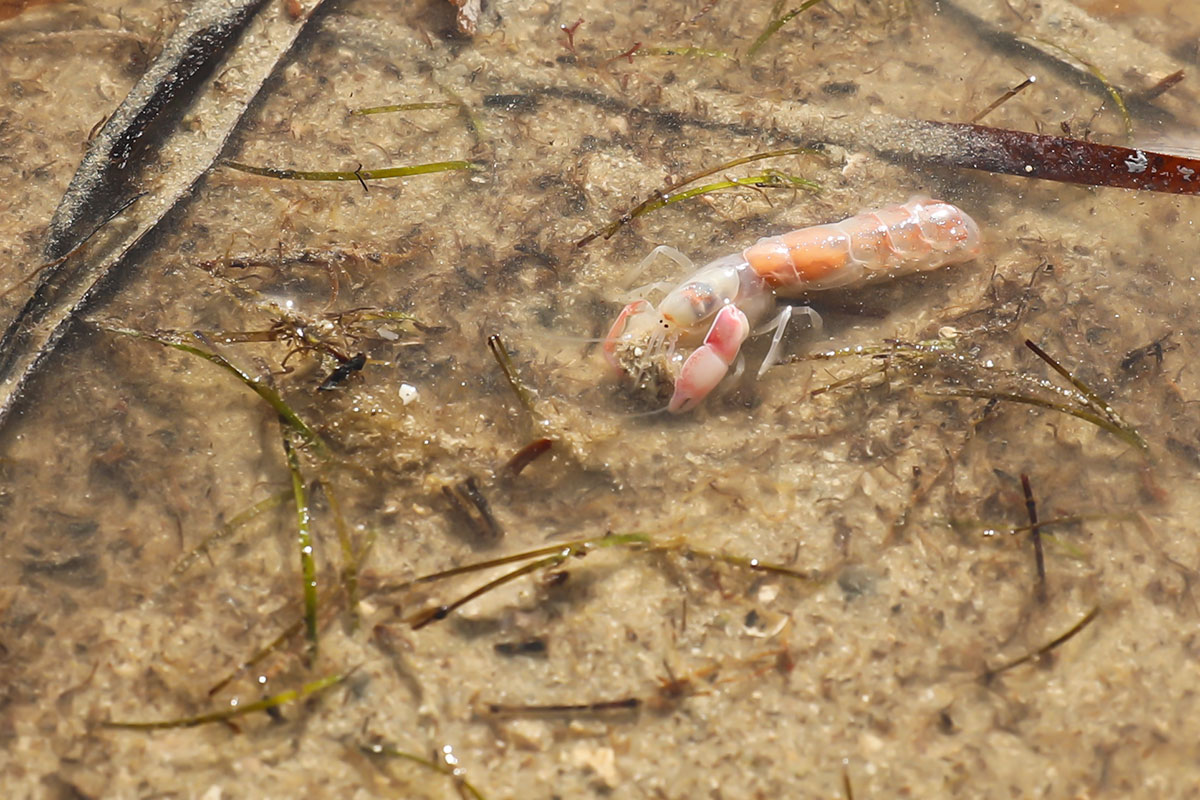How to catch clickers

What would be better than catching your own feed of fresh fish for dinner? Maybe the satisfaction of catching your own bait, to catch the fish with!
Although there are many types of bait you can purchase from our park office or from our stores in town, the local fish do prefer local bait and the fresher the better.
You can do this all year round right here in Port Vincent on the back beach out the front of the caravan park on low tide and it can be a lot of fun for the whole family.
What you need:
You will need to have access to a bait pump, take a bucket with you and head out to the beach on low tide. You will find the clickers (also called nippers) burrowed in the wet sand on the tidal flats, in and around the tidal pools and the waters edge. You will need to look for small mounds of sand on the beach which are often darker in colour. This is where a clicker may be buried.
How to catch them:

You then place the bait pump on top of the mound of sand, pushing the end into the sand and then pulling the bait pump handle towards you. This will draw up sand, water and hopefully the clicker into the bait pump vacuum. You then angle the bait pump away onto a clear patch of sand if possible and push the handle down. The sand, water and the clicker will be emptied onto the beach. You will hopefully see the little white yabby looking critter, flapping around on the sand.
This is the fun part for the children as they dive in and catch them before they escape and put them in the bucket. The best way to pick them up is just behind the nipper if they have one, or you can scoop them up with a flat hand. Be warned, this is why their sometimes called nippers. It’s also best not to hold them for too long and warn young children of this to avoid too much squealing!
What do you do now?
The clickers will not live long in a bucket, so only take what you need for they are best used on the day you catch them. You will need to put some sea water in the bucket, change the water often if possible and don’t let them get hot. This will help to keep them alive longer. They will run out of oxygen in the water but you can also use an aerating pump to oxygenate the water to keep them alive for a day or two.
You can then put them on your hook and cast your line in your favourite fishing spot.
